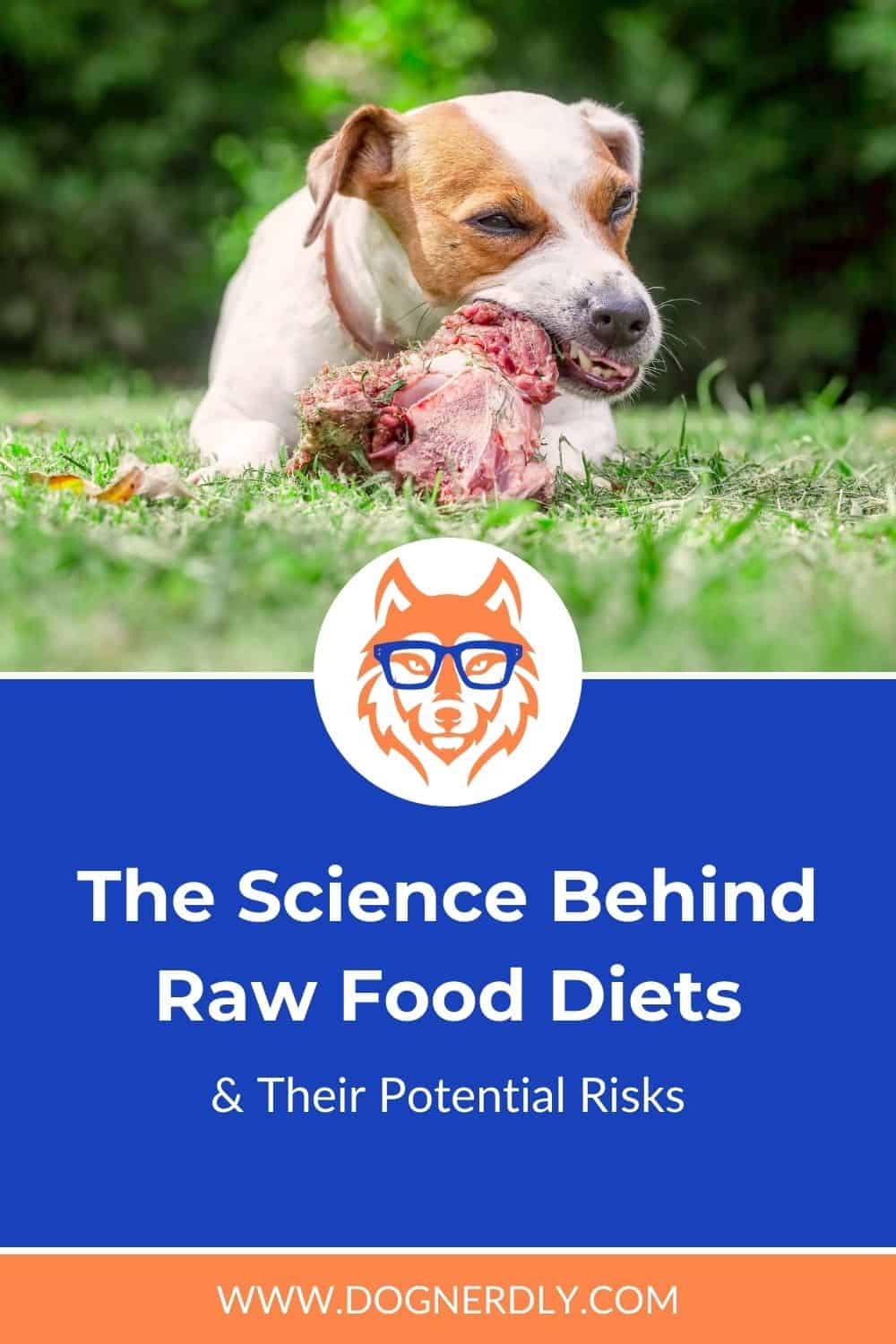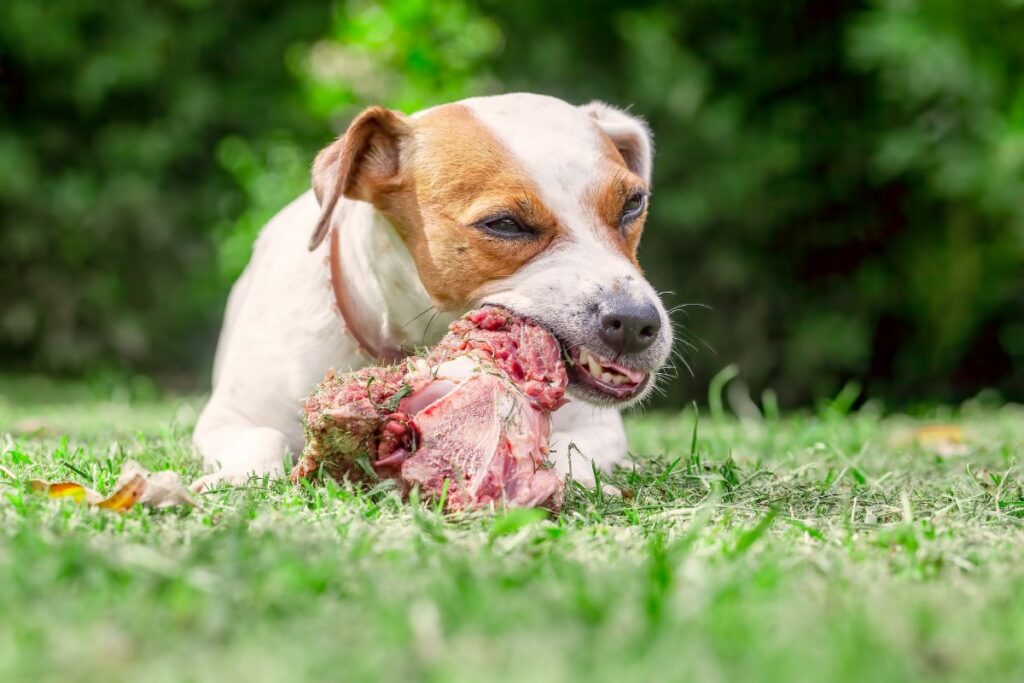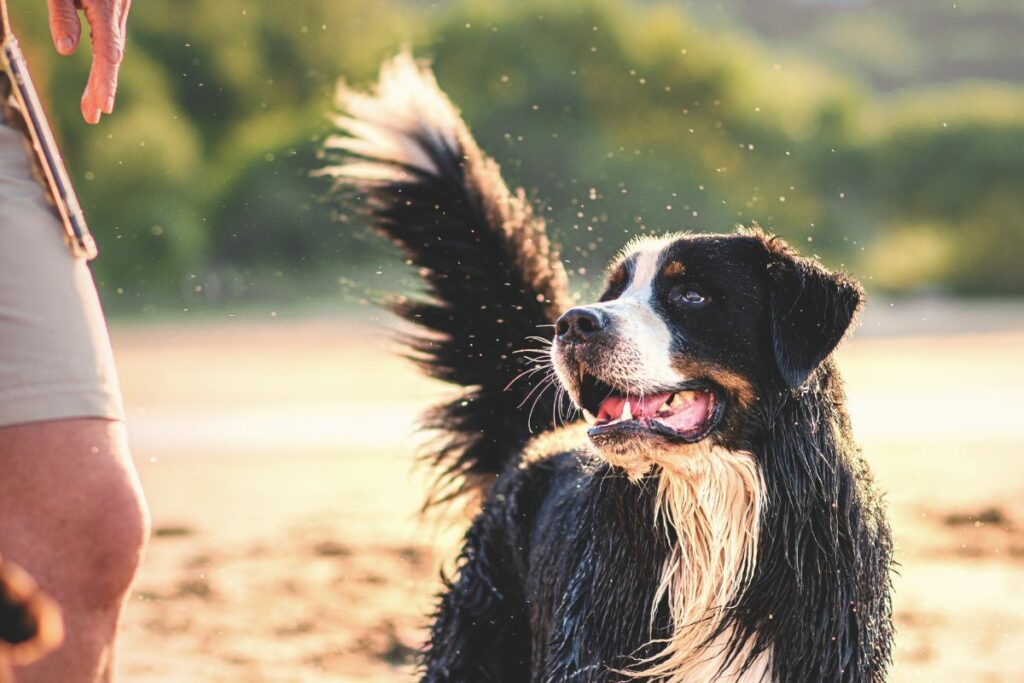Explore the intricacies of raw food diets for dogs, their benefits and risks, and what modern science recommends for a healthy pet.
There is a common myth perpetuated by popular food brands that dogs need to eat like their wild ancestors; to be truly healthy, they must eat a high protein, meat-based, carnivorous, diet. Like most myths, there is some common sense to this, but not without its risks. Let's talk about the rising popularity of such diets and what is important to note before making your decision.
What is a Raw Food Diet?
A raw food diet for dogs typically consists of feeding them uncooked, fresh foods that resemble what their wild ancestors might have eaten. This diet usually includes raw meat, bones, organs, some raw fruits and vegetables, and occasionally dairy products like eggs. The idea is to provide a more natural, unprocessed diet that can potentially offer various health benefits compared to commercial dog foods.
With the growing popularity of all natural diets for humans, the concept of raw diets for dogs was born. When raw food products started hitting the shelves 20+ years ago, like everyone else, I was intrigued. Working for a pet boarding facility at the time, I saw the influx of raw diets being provided to pets during their stays. Retail stores fought to be the first to sell popular raw food brands. Pet trade shows and expos were overwhelmed by new vendors claiming to sell the best raw food products, many of which have come and gone since then. There was a definite and clear energy put into this new trend, but just like many flashy diets, it was just a fad.
Raw food is still a popular topic today, but we’ve become much more educated on the topic and the risks that come with it.
The Evolution of Dogs
Despite what most would think, dogs are omnivores, which means they derive nutrients from both meat and plants. This is one reason why you may find your dog eating grass. Scientific research has shown that an adult dog’s daily diet, to be considered complete and balanced, can contain up to 50% carbohydrates and a minimum of 5% fats and 10% protein. Dogs can live off a vegetarian diet as long as plant-based protein is given in sufficient amounts. This sometimes becomes medically necessary in dogs with food allergies to meat-based proteins.
This fact, however, does not apply to felines, who are carnivores and require a meat-based diet as their body requires nutrients that can only be found in animal meat.
You can learn more about dog nutrient profiles provided by the Association of American Feed Control Officials (AAFCO).
Benefits & Risks of Raw Food Diets for Dogs
Like human diets and popular fads, there are benefits to eating a raw food diet. The real question is if the benefits outweigh the risks. I’ll give you a hint, they don’t.
Advocates of raw diets cite the following benefits:
- Improved Coat and Skin: Many owners report a shinier coat and fewer skin issues.
- Dental Health: Raw bones can help clean teeth, reducing plaque and bad breath.
- Energy Levels: Some dogs may exhibit increased vigor and stamina.
- Digestive Benefits: Proponents suggest raw diets can lead to better digestion.
However, raw diets are not without the following risks and concerns:
- Bacterial Contamination: Raw meat can harbor harmful bacteria like Salmonella and E. coli.
- Nutritional Imbalances: Homemade raw diets often lack essential nutrients. A raw diet can miss crucial elements like calcium or phosphorus, leading to long-term health issues.
- Bone Hazards: Choking or internal injuries can result from bone fragments.
- Cost and Preparation Time: Raw diets can be expensive and time-consuming to prepare.
The primary concern and reason why many veterinarians don’t recommend a raw diet is the high likelihood of contamination that could lead to serious health concerns or even death.
While a raw food diet for dogs can have benefits, it's crucial to understand the risks and prioritize a balanced diet. As with most things in life, nothing is absolute. If you are still interested in exploring a raw food diet, there is a right way to go about it. Start by consulting a veterinarian to ensure your dog's dietary needs are met. Next, find trusted sources for your raw meat to limit exposure to harmful bacteria. Finally, balance out your dog’s diet with good sources of vitamins and minerals that are lacking in a raw food diet.
Frequently Asked Questions
Not all dogs are suited for a raw food diet. Puppies, senior dogs, and dogs with certain health conditions may require specific nutritional needs that a raw diet might not meet. Always consult with a veterinarian first.
Source high-quality, fresh ingredients, handle them with proper food safety protocols, and store them at safe temperatures. However, it's important to note that the risk of bacterial contamination can never be entirely eliminated.
Variety is key. Common choices include beef, chicken, turkey, lamb, and fish. Organs such as liver and kidneys are also beneficial. Ensure meats are fresh and suitable for canine consumption.
Depending on the composition of the diet, supplements like calcium, omega-3 fatty acids, and specific vitamins might be necessary. Consult with a veterinarian for a tailored supplement plan.
Yes, it's possible to mix raw and commercial diets. However, it's crucial to ensure that the overall diet remains nutritionally balanced. Again, consulting with a veterinarian is advisable to determine the best dietary plan for your dog.

Joseph Schifano is the President of The Academy of Pet Careers and Founder of DogNerdly.
With over 20 years of professional pet experience, Joseph got his start as an owner/operator of a 7-figure, all-inclusive pet care business. From there, he purchased The Academy of Pet Careers with a hopes of improving the quality of care provided by industry professionals. This role allowed Joseph to rub shoulders with some of the biggest names in the industry, and gain knowledge in every aspect of pet care.
After witnessing the popularity of social media influencers and the amount of misinformation being taught to pet parents, Joseph decided to create DogNerdly. The goal was to provide science-backed education for the average dog nerd in order to create a world where dogs and humans can live a more harmonious and empowered lifestyle.




